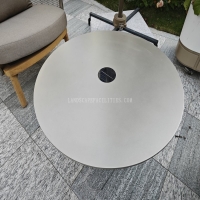Welcome to the website for landscape facilities products and knowledge.
What are the vibration-dampening properties of the table in high-activity or industrial settings?
In demanding industrial environments where heavy machinery operates continuously, the vibration-dampening capabilities of work tables become critical for both operational precision and equipment longevity. Modern industrial-grade tables incorporate sophisticated damping technologies that significantly reduce vibrational energy transmission, creating stable work surfaces even amidst intense activity.
The foundation of effective vibration control begins with specialized materials. Unlike conventional tables, industrial damping tables utilize composite materials with inherent energy-absorbing properties, including constrained layer damping viscoelastic polymers and high-density composite cores. These materials convert mechanical vibrational energy into minimal heat, effectively dissipating disturbances before they can affect sensitive operations.
Structural engineering plays an equally crucial role. Advanced tables feature strategically placed isolation mounts and tuned mass dampers that counteract specific vibration frequencies common in industrial settings. This engineering approach creates frequency mismatches that prevent resonant buildup, essentially making the table "disagree" with ambient vibrations rather than amplifying them.
For high-impact environments involving heavy machinery or constant movement, many industrial tables incorporate active vibration control systems. These smart systems use sensors to detect incoming vibrations and generate counter-vibrations through electromagnetic actuators, effectively canceling out disturbances in real-time. This technology is particularly valuable in facilities housing precision measurement equipment or delicate assembly processes.
The performance of vibration-dampening tables is typically measured by their transmissibility ratio - the percentage of floor vibration that actually reaches the table surface. High-performance industrial tables achieve transmissibility ratios below 5%, meaning 95% of environmental vibrations are effectively neutralized before reaching the work surface.
Beyond material and engineering considerations, proper installation and maintenance significantly impact damping effectiveness. Regular inspection of isolation mounts, ensuring proper leveling, and avoiding unauthorized modifications all contribute to maintaining optimal vibration control performance throughout the table's service life in demanding industrial applications.
Related search:

Recommendation
Outdoor stainless steel table with solar-powered ambient lighting feature - excellent design.